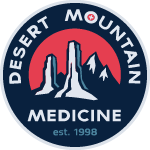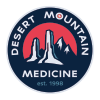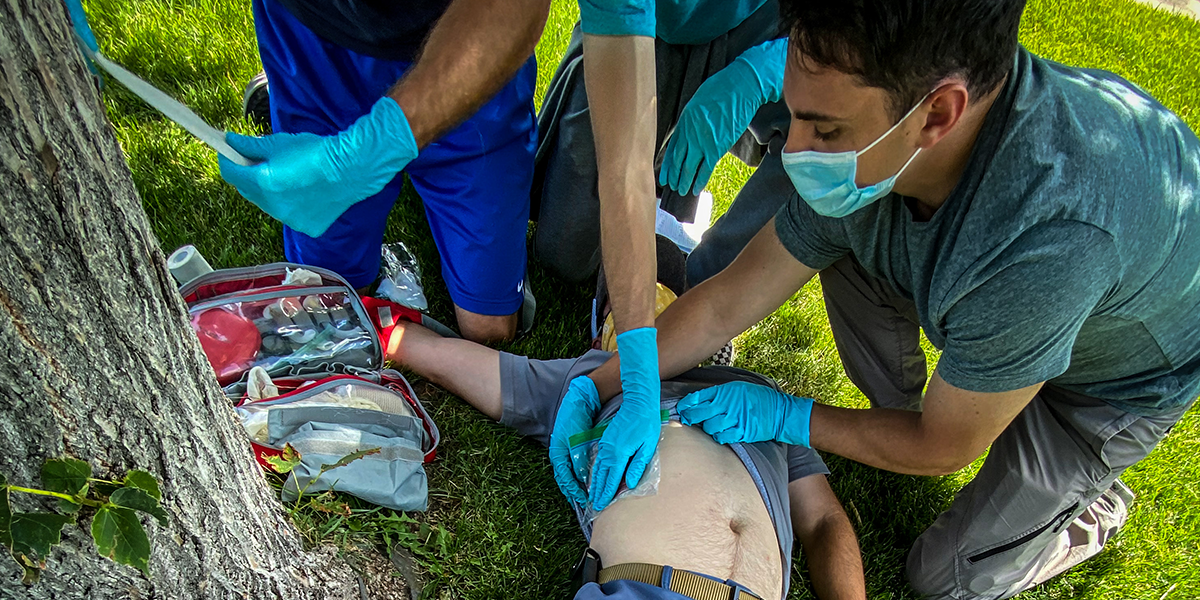Whether you are an avid outdoor enthusiast, rock climber, ski patroller or member of a trail crew taking your first ever Wilderness First Aid (WFA) or Wilderness First Responder (WFR) course, learning how to conduct a Primary Assessment will be an integral part of your Desert Mountain Medicine coursework.
In this post, we discuss the Primary Assessment portion of our patient care. It is safe to suggest that this is the single most important page in our textbook, and is also perhaps the only one you, as a rescuer, need to have indelibly printed in your memory.
What is a “Primary Assessment”?
A primary assessment is a problem-solving system we use to find, identify, and treat immediate life threats. In the primary, we use the mnemonic, “ABCDEG” to remind us of our order of operations, as well as to help us prioritize our treatment. So, what do the letters mean?
A = Airway
Think about this as from the nose down to the very top of the sternum. Here we consider whether your patient is suffering from an airway problem, such as a severe burn, allergic reaction, or choking.
B = Breathing
Now, you’re looking from the top of the sternum, to the bottom of the rib cage. Possible injuries might include penetrating trauma or broken ribs.
C = Circulation
Time to look for bleeding problems. It’s important to remember that big bleeds can be both internal and external. As such, we’ll take time to assess the abdomen and pelvis, as well as the extremities for any arterial bleeds.
D = Disability
Do you have reason to suspect that your patient may have injured their spine? Should you be worried about spinal precautions?
E = Environment/Exposure
Are there any elements of the environment which you can protect your patient from? Great examples are extreme heat or cold.
G = Glucose
Because diabetes is so prevalent in our society, you should give glucose to any patient you find in the backcountry who is unconscious for an unknown reason. Always remember that this needs to be done while the patient is on their side in order to protect their airway.
Why is a Good Primary Assessment Important, and Who Should Get One?
A good primary assessment is your opportunity to find, stop, and fix life-threatening problems. These are the problems your patient is suffering from which could be fatal in the immediate future if left untreated. Every patient deserves a good and thorough primary assessment.
When in Your Patient Care Does the Primary Assessment Happen?
As soon as you are making contact with your patient, your primary assessment has begun. This comes directly after your scene size-up and donning your personal protective equipment (PPE), where you make sure it’s safe to approach the patient, and that you have everything you need. You can even start your primary from a distance!
What Do People Get Wrong About the Primary Assessment?
The biggest mistake you’re likely to make is getting sidetracked in your primary assessment and starting down another piece of patient care, such as taking vitals. It’s important to remember to follow the right order of operations!
Closing
In sum, remember that knowing how to perform a solid, thorough, and efficient primary assessment is perhaps the most important skill we need to develop as rescuers. Remember your steps and don’t get sidetracked.

About Mike Thurber
Mike Thurber is a wilderness emergency medical technician and ski patroller at Taos Ski Valley in northern New Mexico. He loves all things outdoors and is passionate about empowering folks to spend time outside more confidently and safely with solid medical training.









